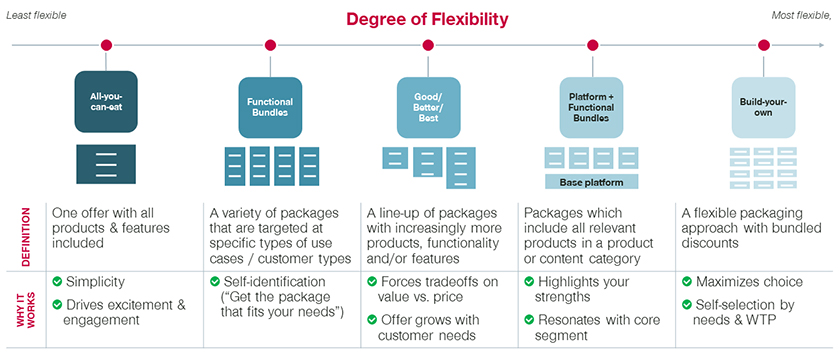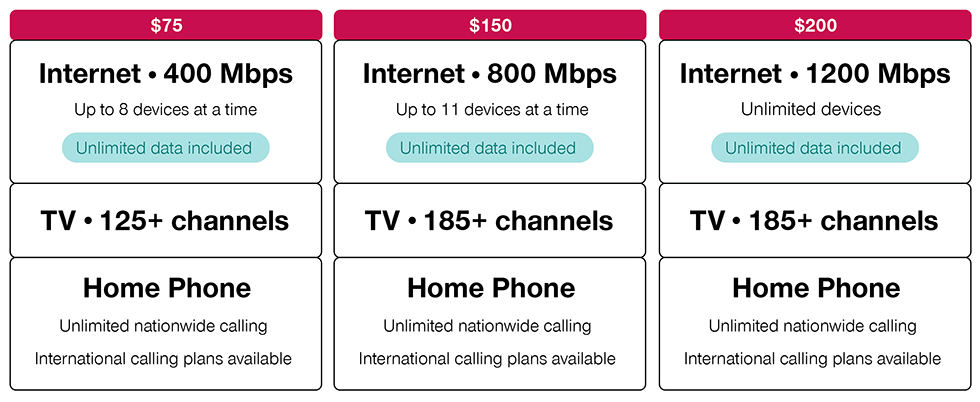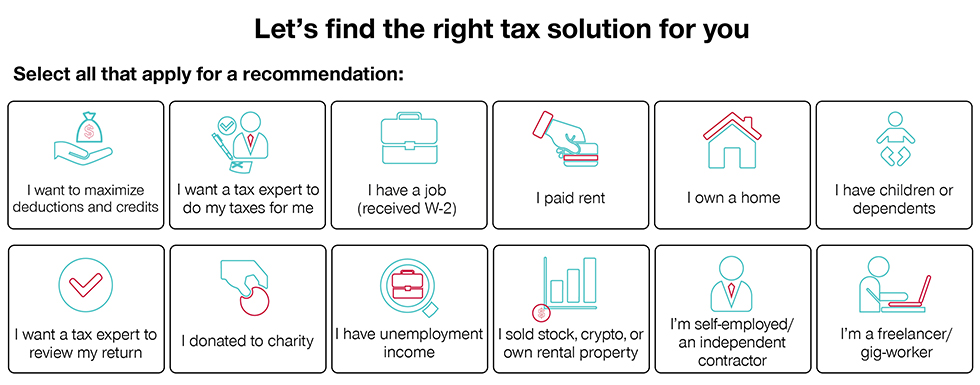A successful bundle pricing strategy has the potential to increase revenue and customer reach. But when should you use it and how do you make sure it’s a success?
What is bundle pricing?
Companies use bundle pricing to combine and sell several individual products or services at one, discounted, price point that is cheaper than if the same were sold separately. Its most famous example? The McDonald’s Extra Value Meal.
What are the advantages of bundle pricing?
At Simon-Kucher, we often work with clients to leverage the many advantages of bundle pricing, while helping them avoid any risks. Here are some of the most compelling advantages:
- Simplify choice for customers: It’s much more convenient for customers to buy a bundle than choose from a potentially overwhelming selection of products.
- Attract customers who want to pay less: By offering more for less, bundle pricing attracts new customers who want to find discounts and deals.
- Increase customer overall spend: You can encourage customers to spend more with you by bundling together complementary products or services that the customer might not have originally bought.
When to use bundle pricing
So how do you know if bundle pricing is right for your company? The most common reasons for creating a bundle pricing strategy are:
- To increase cross-sell: You can increase the sales of less popular products by bundling them with more popular products, like bundling an AI Writer with your social media scheduling tool.
- To increase value perception: Bundle pricing means you could capture a segment of the market that has a lower willingness to pay and sell on the value of the overall bundle not the individual products.
- To defend against competition: Bundle pricing could allow you to defend against competitors by becoming a one-stop-shop.
- To provide expertise and simplify choice: If your offering is technically complex or large, your customers may need guidance. You can create bundles that meet specific needs.
- To provide a range of price points: Bundles can allow you to present to a customer a range of “versions” and price points, allowing them to make decisions based on their needs and budget. This also increases the likelihood you have put a price in front of them that fits that budget if you are not sure exactly what it is.
What are the risks with bundle pricing?
Most companies can benefit from using bundle pricing. However, there are some risks that should be considered when developing a bundle strategy, for example:
- If you are consistently able to sell individual products at full price, creating a cheaper bundle may decrease overall spend and cannibalize your sales.
- If you include products that are very niche or low value in the bundle, this could devalue the bundle overall, reducing sales.
- If your bundles are not well targeted at certain customer segments, this could make it more difficult for a customer to choose, rather than easier.
Building your bundle pricing strategy
When done right, bundling increases customer satisfaction and loyalty. So, it is important to make your bundle relevant, attractive, and easy for customers so they can pick the right one. Bundle design and bundle structure play a critical role:
Bundle design
The most important thing to your customers? Include products or services they really want in your bundles along with products they would buy if it were cheaper. And make sure you include opportunities to upsell too. A clear pathway to the next bundle “up” will mean the customers know where to go as their needs or budgets change.
Bundle structure
Your plan for structuring your bundles needs to align with your company’s sales strategy – is it product-led or sales-led?
- Product-led: You’ll want to try to maintain simplicity and keep your offer more rigid. The most common way product-led companies bundle is with good, better, best versioning.
- Sales-led: You’ll have more scope for variation within a bundle, and more demands from your customers to customize. While you may not wish to allow complete customization, you can increase flexibility. This means things like add-ons and extras that customers can choose in addition to any bundle.
The most common bundle structures, along with their key advantages and disadvantages, can be seen below:

Bundle pricing examples that work
Let’s look at some existing bundle pricing strategies to see how companies are making them work in the market.
McDonald’s Extra Value Meal
The offer: A burger, fries, and drink at a lower price than it would cost to purchase each separately.

Why it works
The meal encourages customers to buy both a drink and a side with their burger, rather than just one or the other. This increases the average overall spend than if these items had not been bundled together.
Comcast
The offer: Three versions of similar but increasingly rich internet, phone, and TV bundles.

Why bundle pricing works
The price bundles drive sales by offering customers a range of price points, while still including a version of the three products. This means that customers with similar needs, but different budgets, can still find something that works for them.
Turbotax
The offer: Recommendation of a solution to address your specific tax needs.

Why bundle pricing works
The customer’s potentially complex purchase decision is simplified by an online tool that helps recommend a bundled solution that will address their specific needs. Turbotax demonstrates the value of the bundle to the customer through this tool, while avoiding making the customer feel like they are paying for things they do not need.
Amazon Prime
The offer: A range of products and services across platforms within one bundle at a lower price.

Why bundle pricing works
While a customer may not need or use every part of the bundle, the value perception is high because it can still save the customer money even if they just use a few products. It also helps Amazon protect against competition by increasing the likelihood a customer will see Amazon as a one-stop-shop.
Bundle pricing strategy – build the best
A successful bundle pricing strategy will increase sales, attract new customers, and capture a larger share of the market. But it is not risk free. You need to explore if this new pricing strategy works for your company. Consider how you can incorporate it within your existing strategies. Ready to take the next step? We can help you make the right decision.
Explore bundle pricing as part of your strategy. Talk to us.








